Car Hire and The Spanish Costas
Car Hire in the Spanish Costas from Rhinocarhire.com
Renting a car in the Spanish Costas offers travelers unparalleled freedom to explore the sun-drenched coastal regions, renowned for their beautiful beaches, vibrant towns, and rich cultural landmarks. We offer car hire from all the reputable car hire companies in these areas of Spain, providing a range of vehicles to suit various needs. When driving, it's essential to be aware of Spain's road rules, including mandatory use of seat belts, specific speed limits, and parking regulations. Navigating the scenic coastal roads, from Costa Brava in the northeast to Costa del Sol in the south, becomes an adventure in itself, giving visitors the flexibility to discover hidden coves, historic sites, and charming seaside villages at their own pace.
Hiring a Car in the Spanish Costas: Key Points to Consider:
1. Documentation:
- International Driving Permit (IDP): While an EU driving license is generally accepted, non-EU visitors might benefit from having an IDP along with their valid national driving license.
- Passport/ID: Most rental companies will require a form of photo identification.
- Credit Card: For security deposits and payments.
2. Age Restrictions: Minimum age is typically 25, though this can vary between rental companies. Drivers under 25 might incur a young driver surcharge.
3. Additional Drivers: If more than one person intends to drive, they must be added to the rental agreement, often for an extra fee.
4. Insurance: Essential coverages like third-party liability are typically included. However, consider opting for additional coverages like Collision Damage Waiver (CDW) or Theft Protection for added peace of mind. Familiarize yourself with the insurance excess and check if the company offers an excess waiver.
5. Fuel Policy: Policies vary, but the most common is "Full to Full," meaning you pick up the car with a full tank and return it full.
6. Car Checks: Before driving away, inspect the car for any damages and ensure they are documented to avoid disputes upon return.
7. Local Driving :
- Drive on the Right: In Spain, you'll need to drive on the right-hand side of the road.
- Speed Limits: Generally, it's 50 km/h in cities, 90 km/h on main roads, and 120 km/h on motorways.
- Parking: Blue zones indicate paid parking. White zones are typically free, but always check local signs.
- Seat Belts: Compulsory for all passengers.
8. Tolls: The Spanish Costas have toll roads, especially major highways. Ensure you have cash or a card handy, or inquire about electronic payment options.
9. Child Seats: If traveling with children, it's mandatory for kids under 135 cm to use an appropriate child seat. Most car rental companies offer these for an additional fee.
10. Seasonal Considerations: Summer months see a surge in tourists. It's advisable to book in advance to ensure availability and better rates.
11. Drop-off Locations: If planning to return the car to a different location than pick-up, ensure you're clear on any one-way rental fees.
In Conclusion: Renting a car in the Spanish Costas empowers you to explore the region's diverse beauty at your own rhythm. Ensuring you're well-prepared with the right documentation and knowledge of local driving customs will set the stage for a seamless and enjoyable journey.
Costa Brava
At the north eastern end of Spain in Catalonia is the Costa Brava which goes from Blanes, 60 kilometres north west of Barcelona, up to the French border. The Costa Brava has combined perfect beaches with distinctive countryside to lure tourists back time and time again for their summer holidays. Read more on the
Costa Brava.
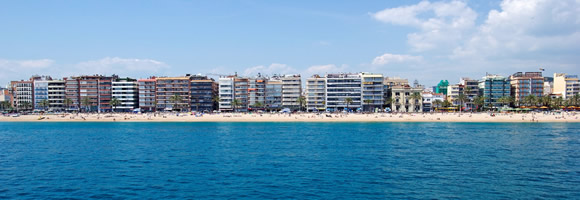
Costa Dorado
On that side of the country you will also find the Costa Dorado. The golden coast extends from Barcelona down along the Mediterranean Sea to the city of Tarragona. It has been called ‘golden’ because of the colour of its dazzling sandy beaches. Read more on the
Costa Dorado.
Costa Blanca
Further down, on the south east coast of Spain in the province of Murcia and covering about 200 kilometres, is the Costa Blanca. The Costa Blanca is hugely popular with tourists from Germany and Spain who contribute to Benidorm and Alicante being two of the most visited parts of the country. Benidorm is a coastal town in Valencia which started life as a small fishing village but is now a buzzing vacation destination. The Alicante Province is mountainous and has a diverse climate and topography. Read more on the
Costa Blanca.
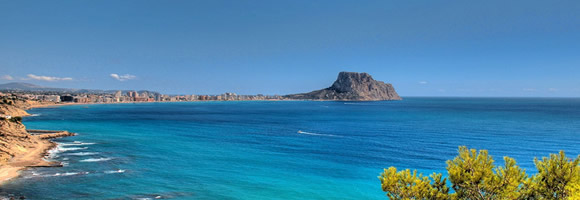
Costa del Azahar
Also in Valencia is the Costa del Azahar which stretches between the towns of Alcanar and Denia. It is known in English as Orange Blossom Coast because of the verdant orchards of orange tree groves which provide the backdrop to some stunning beaches. Read more on the
Costa del Azahar.
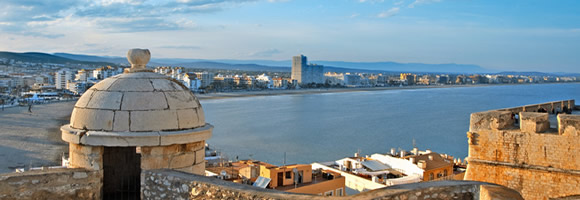
Costa Calida
More southerly still is the Costa Calida which lies in Murcia and covers 250 kilometres of coastline and beautiful beaches. The Costa Calida benefits from a special micro climate which keeps it especially warm and gives it its name. Read more on the
Costa Calida.
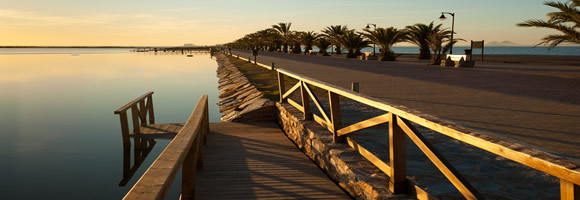
Mar Menor
At the top of the Costa Calida is an inland body of water known as the Mar Menor (small sea) which is a salt water lagoon (The biggest salt water lagoon in Europe in fact) and proves a popular attraction for swimmers who can enjoy bathing there. Near to the Mar Menor is a strip of land known as La Manga which has been heavily developed and is frequently visited by tourists.
Costa Almeria
Heading around onto Spain’s south coast you will first see the Costa Almeria which has some of Andalusia’s most unspoilt coastline including nature parks and deserts. This is a good place to go if you want to avoid the crowds. Read more on the
Costa Almeria.
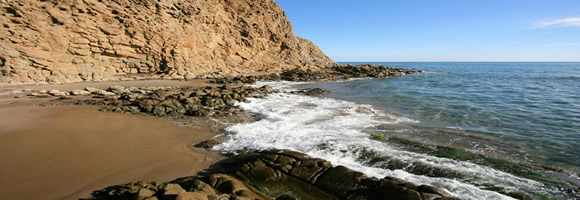
Costa del Sol
But if you want to be in the mix then continue westwards to the Costa del Sol. The sunshine coast has an energy unlike any other part of the world and has been immortalized in many films including the gangster flicks The Business and Sexy beast with Ray Winstone.

The Costa del Sol has it all. Every type of low budget, self catering and luxury accommodation, 18 hole golf courses, theme and water parks and tonnes of bars, restaurants and night clubs. Read more on the
Costa del Sol.
Costa de la Luz
As the south coast becomes the west coast and meets the Atlantic Ocean you will finally come to the Costa de la Luz. It is situated in the province of Cadiz and is a favourite haunt of wind and kite surfers due to the blustery conditions there.
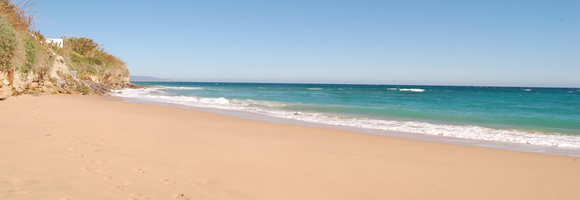
Consider renting a car through Rhino and driving around the Spanish mainland so that you can compare and contrast these coasts for yourself. You can take advantage of Rhino’s unlimited mileage offer on our hire cars and enjoy the journey of a lifetime while experiencing the warmest of cultures. Read more on the
Costa de la Luz.
Map of the Costas
(click for larger map)
Top Car Hire Locations in Spain
Useful Link